Fable Legends Early Preview: DirectX 12 Benchmark Analysis
by Ryan Smith, Ian Cutress & Daniel Williams on September 24, 2015 9:00 AM ESTDiscussing Percentiles and Minimum Frame Rates
Up until this point we have only discussed average frame rates, which is an easy number to generate from a benchmark run. Discussing minimum frame rates is a little tricky, because it could be argued that the time taken to render the worst frame should be the minimum. All it then takes is a bad GPU request (misaligned texture cache) which happens infrequently to provide skewed data. To this end, thanks to the logging functionality of the benchmark, we are able to report the frame rate profiles of each run and percentile numbers.
For the GTX 980 and AMD Fury X, we pulled out the 90th, 95th and 99th percentile data from the outputs, as well as plotting full graphs. For each of these data points, the 90th percentile should represent the frame rate (we’ll stick to reporting frame rates to simplify the matter) a game will achieve during 90% of the frames. Similar logic applies to the 95th and 99th percentile data, where these are closer to the absolute maximum but should be more consistent between runs.
This page (and the next) is going to be data heavy, but our analysis will discuss the effect of CPU scaling on percentile data on both GPUs in all three resolutions using all three CPUs. Starting with the GTX 980 Ti:
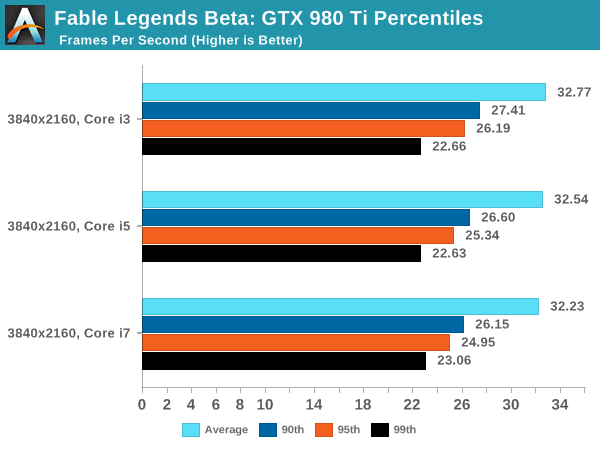
All three arrangements at 3840x2160 perform similarly, though there are slight regressions moving from the i3 to the i7 along most of the range, perhaps suggesting that having an excess of thread data has some issues. The Core i7 arrangement seems to have the upper hand at the low percentile (2%-4%) numbers as well.
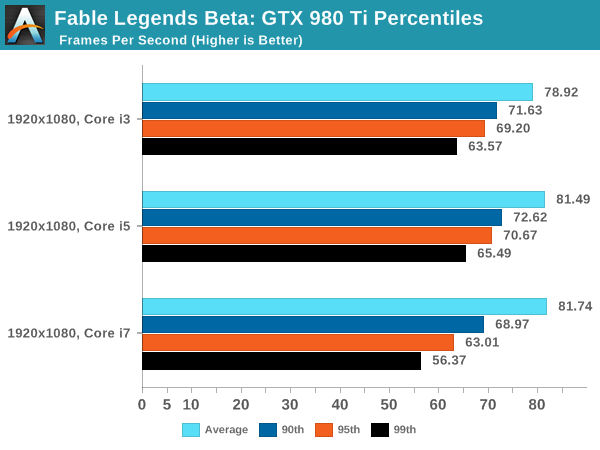
At 1080p, the Core i7 gives greater results when the frame rate is above the average and we see some scaling effects when the scenes are simple (giving high frame rates). But for whatever reason, when the going gets tough the i7 seems to bottom out as we go beyond the 80th percentile.
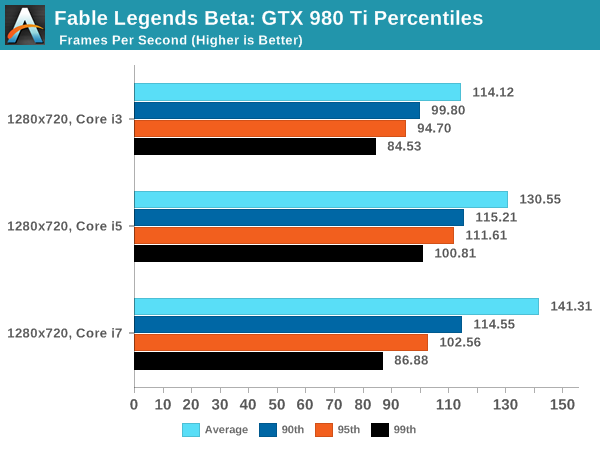
If we ever wanted to see a good representation of CPU scaling, the 720p graph is practically there – all except for the 85th percentile and up which makes the data points pulled out in this region perhaps unrepresentative of the whole. This issue might be the same issue when it comes to the 1080p results as well.


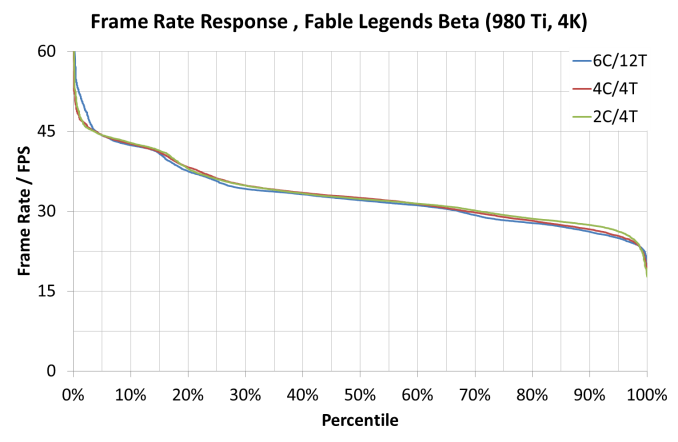
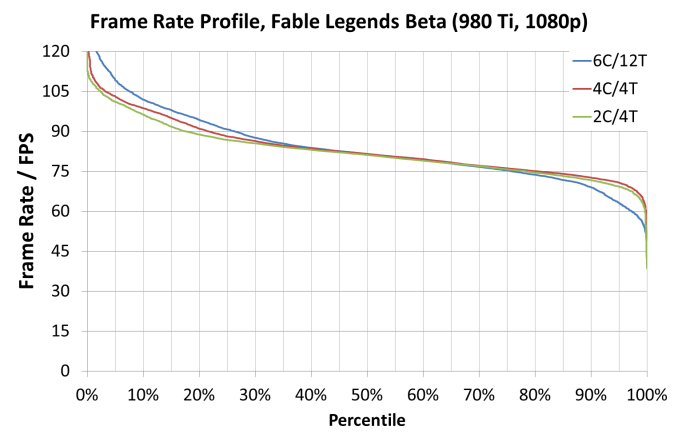
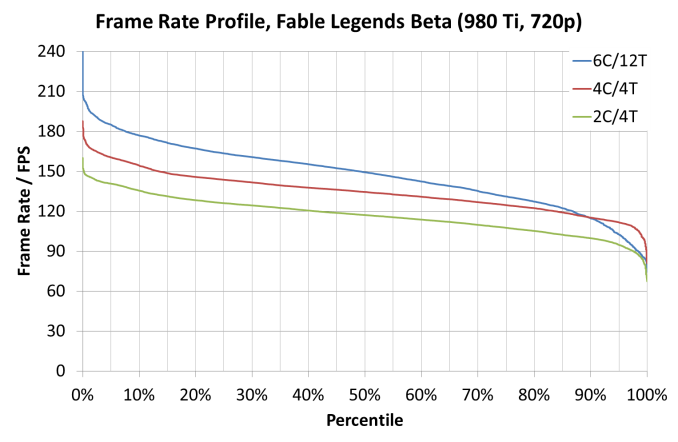








141 Comments
View All Comments
Ian Cutress - Thursday, September 24, 2015 - link
Please screenshot any issue like this you find and email it to us. :)Frenetic Pony - Thursday, September 24, 2015 - link
So interesting to note, for compute shader performance we see nvidia clearly in the lead, winning both compute and dynamic gi which here is compute based, once we get to pixel operations we see a clear lead for Amd, ala post processing, direct lighting and transparency. When we switch back to geometry, the gbuffer, Nvidia again leads. Interesting to see where each needs to catch up.NightAntilli - Thursday, September 24, 2015 - link
Once again I wish AMD CPUs were included for the performance and scaling... Both the old FX CPUs and stuff like the Athlon 860k.Oxford Guy - Friday, September 25, 2015 - link
They claimed that readers aren't interested in seeing FX benchmarked. That doesn't explain why like 8 APUs were included in the Broadwell review or whatever and not one decently-clocked FX.I also don't see why the right time to do Ashes wasn't shortly after ArsTechnica's article about it rather than giving it the GTX 960 "coming real soon" treatment.
NightAntilli - Sunday, September 27, 2015 - link
Considering that DX12 is supposed to greatly reduce CPU overhead and be able to scale well across multiple cores, this is one of the most interesting benchmarks that can be shown. But yeah. It seems like there's a political reason behind it.Iridium130m - Thursday, September 24, 2015 - link
Shut hyperthreading off and run the tests again...be curious if the scores for the 6 core chip come up any...we may be in a situation where hyperthreading provides little benefit in this use case if all the logical cores are doing the exact same processing and bottlenecking on the physical resources underneath.Osjur - Friday, September 25, 2015 - link
Dat 7970 vs 960 makes me have wtf moment.gamerk2 - Friday, September 25, 2015 - link
Boy, I'm looking at those 4k Core i3, i5, and i7 numbers, and can't help but notice they're basically identical. Looks like the reduced overhead of DX12 is really going to benefit lower-tier CPUs, especially the Core i3 lineup.ruthan - Sunday, September 27, 2015 - link
Dont worry Intel would find the way, how to cripple i3, even more.Mugur - Friday, September 25, 2015 - link
This game will be DX12 only since it's Microsoft, that's why its Windows 10 and Xbox One exclusivity.Where can I find some benchmarks with the new AMD driver and this Fable Legends?